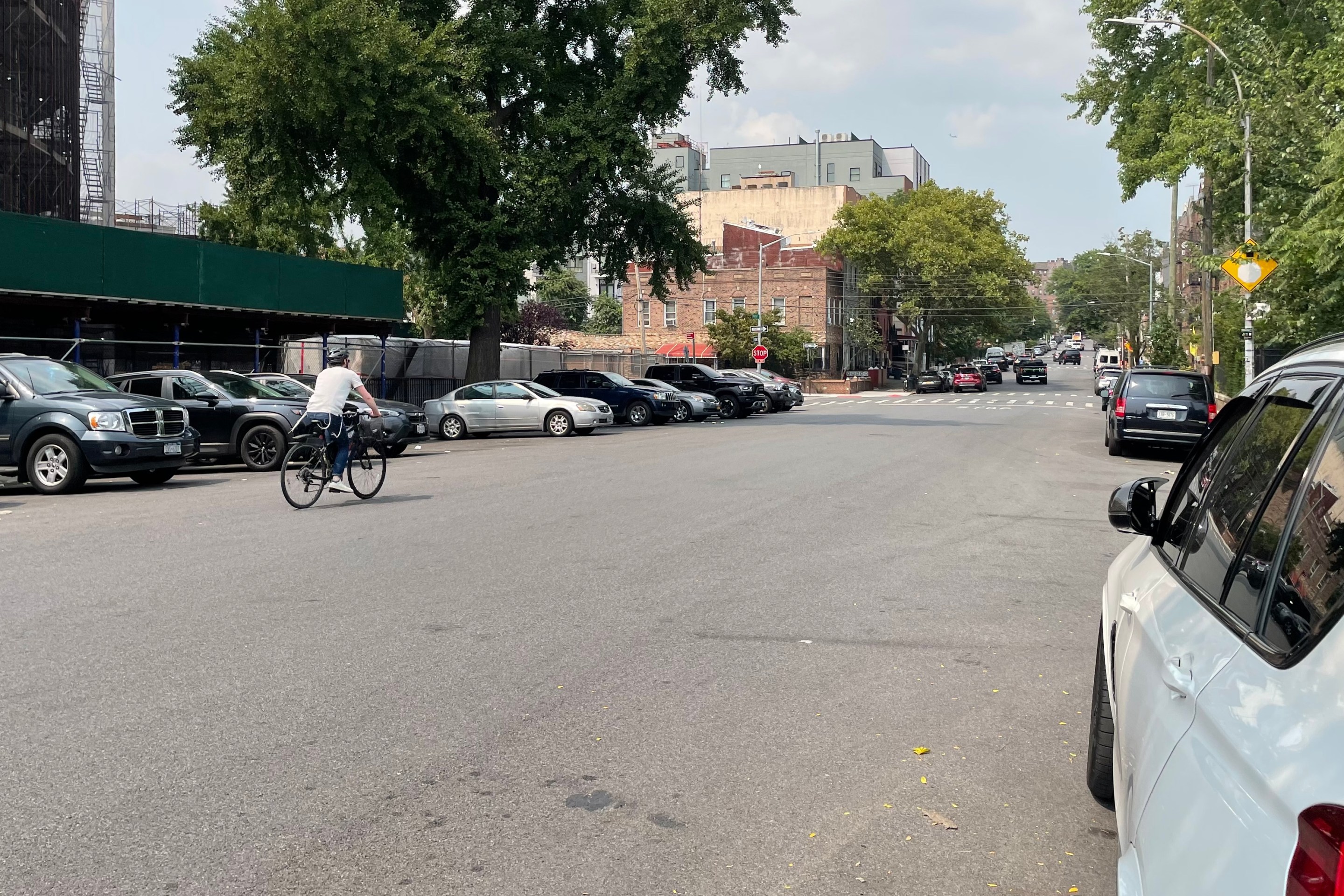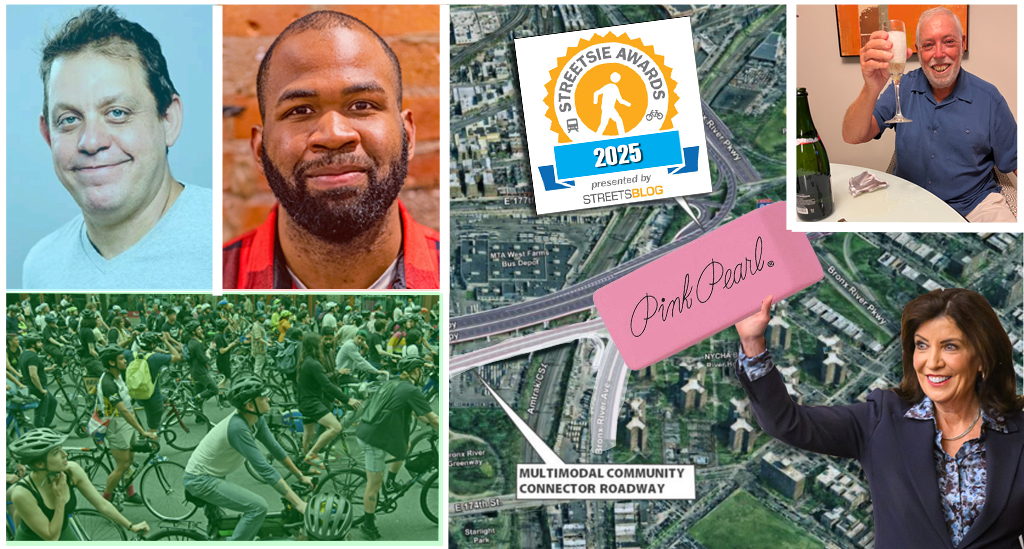 I'd bet that people walking outnumber people bicycling across the Brooklyn Bridge by at least 100 to one. I cycle across the wooden-slatted walkway that soars over the top of the bridge regularly now, and every time I do so I think about this. My rolling bicycle negates the space for scores of people every second, forcing them into a relatively skinny strip that is half as wide as the whole walkway.
I'd bet that people walking outnumber people bicycling across the Brooklyn Bridge by at least 100 to one. I cycle across the wooden-slatted walkway that soars over the top of the bridge regularly now, and every time I do so I think about this. My rolling bicycle negates the space for scores of people every second, forcing them into a relatively skinny strip that is half as wide as the whole walkway.
One day it hit me: Why not erase the white line? Why not end the separation of cycles and pedestrians from each other, and allow them to mix freely on the curved arc across the East River. After all, under the "Shared Street" philosophy, pioneered in Holland and spreading around the world under the proselytizing of folks like my colleague Ben Hamilton-Baillie of Bristol, England, a number of good things might happen.
First of all, walkers would have more space. That's an obvious benefit. As the bottom and most important base of the pyramid of uses that occupy a public space, it's right that walkers should have as much space as possible in a public right of way. They are using the most efficient form of transportation ever devised in terms of moving people from point A to B.
Secondly, bikers would slow down. Just as the "Shared Street" studies show with drivers when faced with a street devoid of traffic signs and lines and full of kids playing and people walking, bikers would slow down when faced with the task of slowly navigating through the crowds of locals and tourists making their way from one shore to another. The bikers would not have some line on the sidewalk essentially giving them a thumbs up to speed along, shouting at pedestrians to get out of their way.
It's a problem now that quite a few cyclists feel no restraint in zooming down one side or another of the walkway. They risk collisions should a person on foot take a step the wrong way, and at the very least it's scary to have a cyclist hurtle past you while you're on a scenic stroll.
I can practically hear cyclists screaming "No" at my suggestion. It might turn what is an efficient morning commute for cyclists including myself into something much slower and less practical. That is a possibility. But I suspect if the lines were erased on the Brooklyn Bridge walkway, and pedestrians, cyclists and other forms of non-motorized traffic were allowed to mix, the people on wheels would still move at a reasonable pace.
It's a leftover legacy of modernist urban planning and design that separating things somehow makes them more efficient or more productive. It's being increasingly discovered that's not the case. New York City Transportation Commissioner Janette Sadik-Khan has been very astute in trying things. How about erasing that line for a while on the bridge, and seeing what happens?
Photo: twharris





